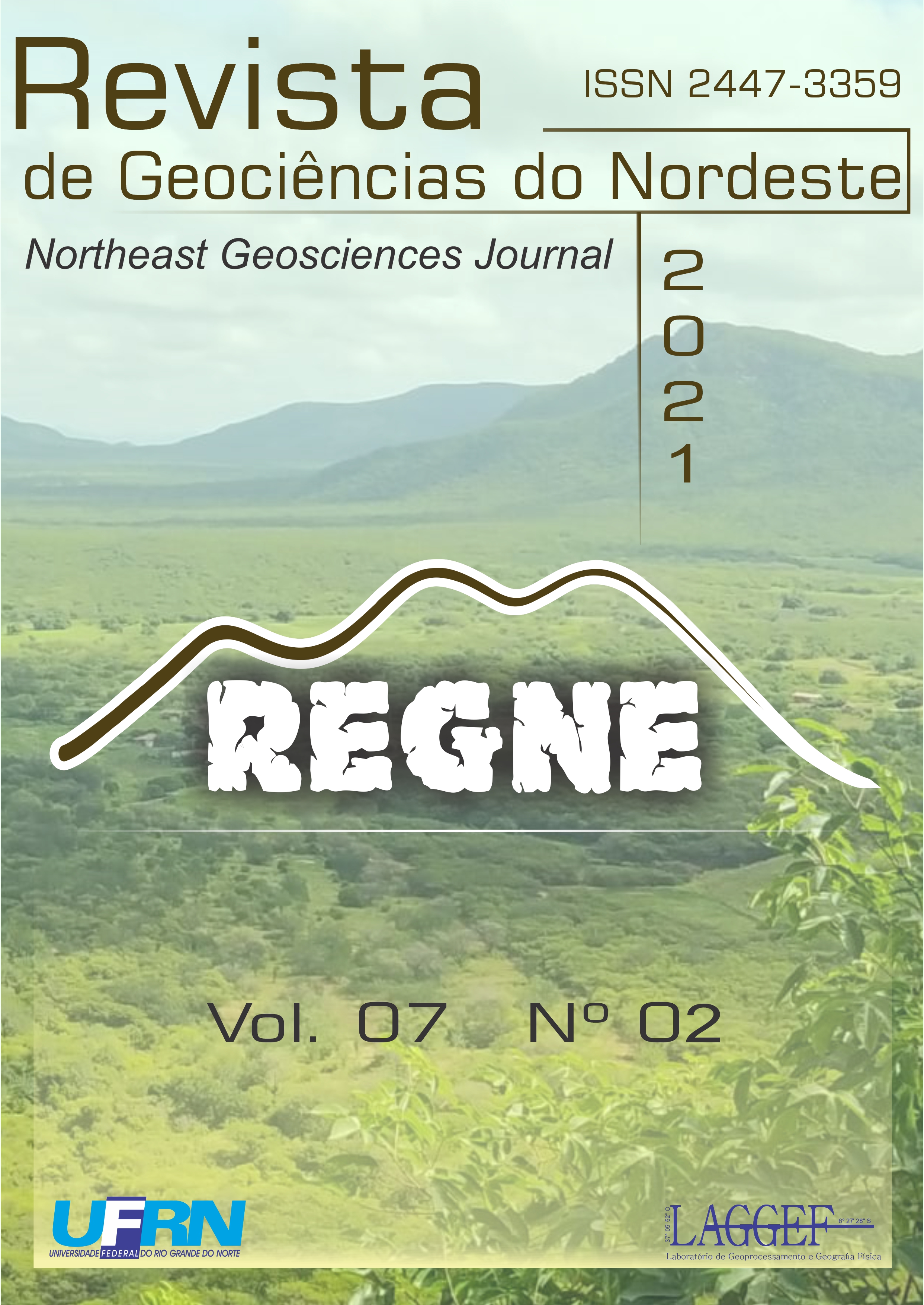2-D Inversion of magnetic data and gravity modelling of the transition zone between the Pernambuco-Alagoas domain and the northern portion of the Sergipano Belt (NE, Brazil)
DOI:
https://doi.org/10.21680/2447-3359.2021v7n2ID22049Abstract
Two-dimensional magnetic inversions were performed with the purpose to obtain information about the magnetic susceptibility, depth and volume of true magnetic sources located in the basement adjacent to the Sergipe-Alagoas basin, in the transition zone between the Pernambuco-Alagoas Domain and the northern portion of the Sergipano Belt (Borborema Province, NE Brazil) and to delineate its geometries. The magnetic data processing was performed to interpret geological contacts, source’s edge boundaries and mapping of folds and shear zones. In the results of the magnetic inversion, a source was found in the Rio Coruripe domain between 9 and 21 km in depth with a magnetic susceptibility of 0.0079 (SI) and another in the Pernambuco-Alagoas domain between 7.5 and 9 km with a magnetic susceptibility of 0.0077 (SI). The basement’s depth was obtained through spectral analysis, whose base was found at 37.7 km. In addition, gravity models were created with the purpose to verify the information obtained by the magnetic inversion and spectral analysis, which was useful to understand how these sources interfere in the structure of the basement and how it affected its tectonic model.
Downloads
Downloads
Published
How to Cite
Issue
Section
License
Copyright (c) 2021 Revista de Geociências do Nordeste

This work is licensed under a Creative Commons Attribution 4.0 International License.


 Português (Brasil)
Português (Brasil) English
English







